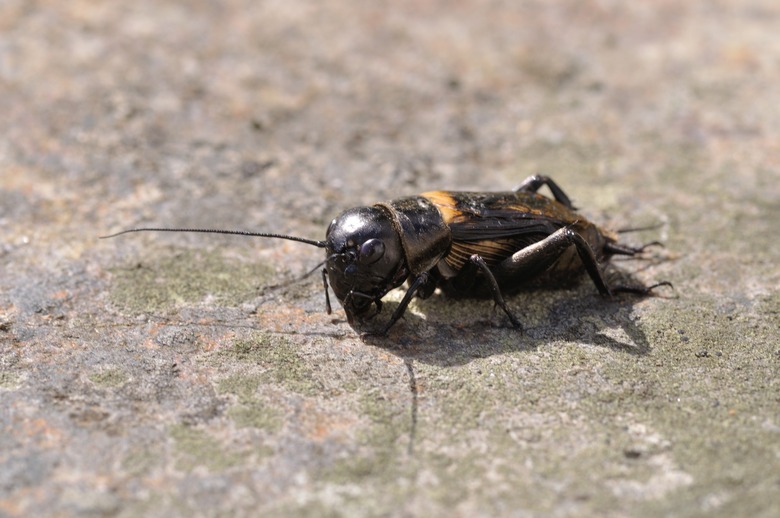Cricket Habitat
Have you ever heard crickets chirping at night and wondered what all the hubbub was about? Maybe those crickets are boasting about all the extraordinary things about crickets. From their history as pampered pets in ancient Japan and China to their ability to live in almost any environment to their capacity for eating everything in sight, crickets are incredible creatures.
History
History
In ancient China and Japan, crickets were kept as pets in cages made from bamboo and even gold. Crickets were often kept in the bedroom so their night song could comfort or lull the cricket's owner to sleep. In Beijing today, crickets are viewed less as pets and more as sporting entertainment. Fighting crickets are raised on a special diet and then deprived of food for a short time before a "cricket match." Two crickets are introduced into a tiny arena and spectators watch them fight. Some Chinese crickets may be superstars, but most crickets around the world just spend their time breaking down vegetative matter to replenish the soil, and of course, chirping!
Types
Types
There are more than 900 species of cricket—ant crickets, bog bush crickets, camel crickets, mole crickets, to name a few—but the two we are most familiar with are house crickets and field crickets. Field crickets prefer to live outdoors, eating decaying plant matter and seedlings, but you can find house crickets anywhere in your home—basements, behind stoves or fireplaces, in cupboards or wall spaces, and even in your closet, eating your favorite silk or wool clothing.
Appearance
Appearance
Adult crickets are about one inch long and come in many colors, but mostly black or brown. A cricket has three main parts: its head, thorax and abdomen. The head contains the cricket's compound and simple eyes, mouth and antennae. The legs and wings are attached to the thorax, while the largest part of the cricket's body, the abdomen, contains the cricket's heart, digestive system and other organs. Female crickets have a large ovipositor at the end of their abdomen, which they use to deposit their eggs into moist earth.
Habitat
Habitat
Crickets live in almost every environment. They are found in fields and meadows, forests and grasslands, marshes and swamps, trees and bushes, and even caves, beaches, in anthills and underground. Crickets live along roadsides, in gardens and can even live in your house. If you want to capture and keep a cricket, be sure to put it in a sturdy container with plenty of air, water and food. A hungry or thirsty cricket will eat through a cardboard cage in no time.
Fun Facts
Fun Facts
Crickets use their long antennae to sense things around them, but also to detect smells.
Crickets use their simple eyes to detect light and shadow; their complex eyes, which are made up of many hexagonal lenses, can see in every direction.
Crickets sing to attract a mate. The male cricket sings a song that is specific to his species so that the female of his species can find him.
Male crickets sing with their wings. Each wing has a tiny rasp-like area at the tip. The cricket scrapes the top of one wing over the bottom of the other to make that characteristic chirping sound.
How crickets chirp is determined partly by the weather. When it is warm, they chirp quickly. When it is cold, they chirp at a slower pace.
Crickets hear with their legs. They have a tiny "eardrum" just behind their knees that helps them pick up the vibrations of sound.
Crickets can jump 20 to 30 times their height. Since the average cricket is about one inch long, this means it can jump almost three feet from a standing start. Crickets use jumping as their main mode of transportation even though they have wings.
References
Cite This Article
MLA
Gutierrez, D.M.. "Cricket Habitat" sciencing.com, https://www.sciencing.com/cricket-habitat-5439194/. 22 November 2019.
APA
Gutierrez, D.M.. (2019, November 22). Cricket Habitat. sciencing.com. Retrieved from https://www.sciencing.com/cricket-habitat-5439194/
Chicago
Gutierrez, D.M.. Cricket Habitat last modified March 24, 2022. https://www.sciencing.com/cricket-habitat-5439194/
